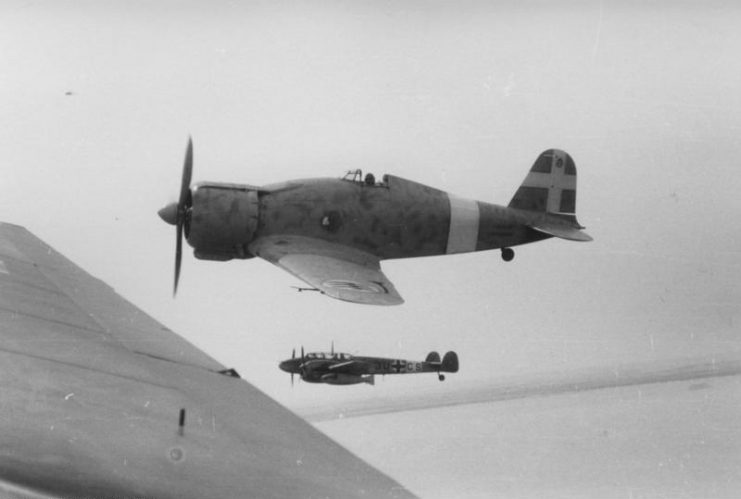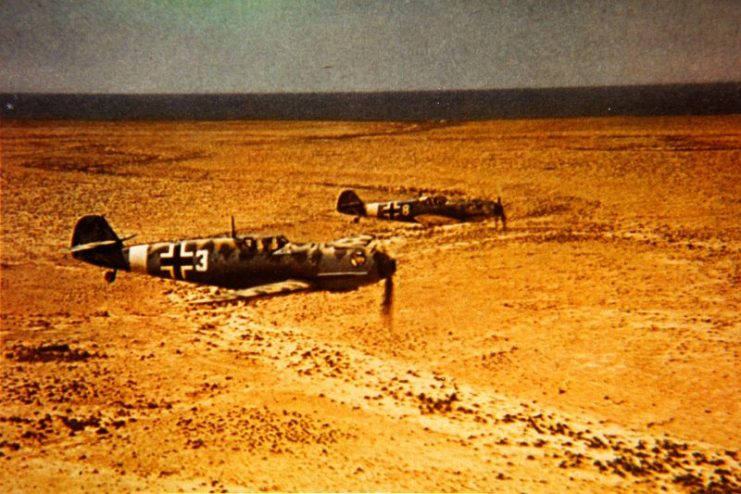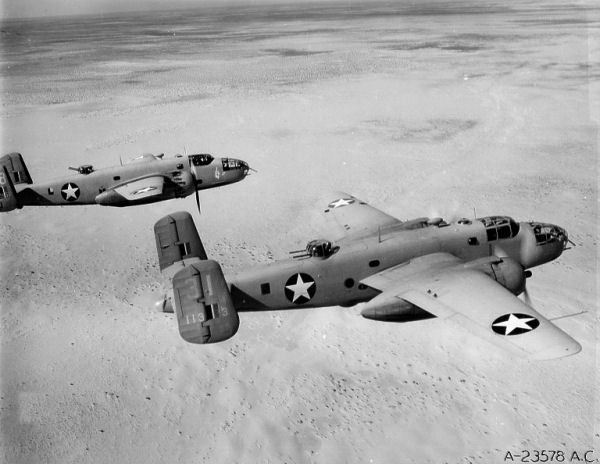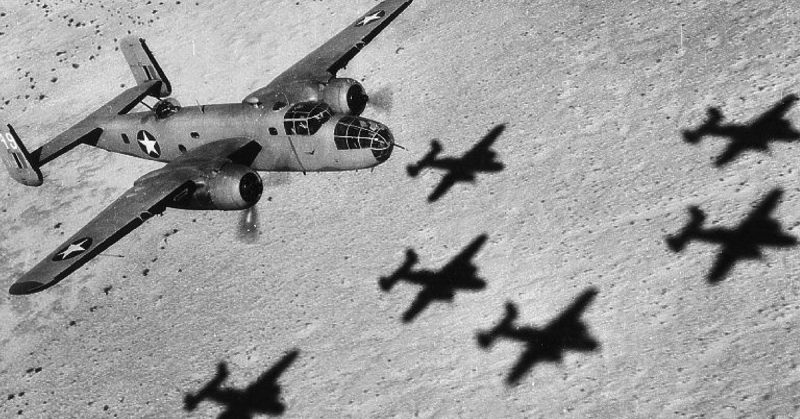Over the winter of 1942-3, American pilots spent several months based at the airfield at Thélepte in North Africa. It was a difficult posting, one that highlighted the many hazards for front line pilots in WWII.
A Home in the Desert
On December 11, 1942, pilots of the US 58th Squadron touched down at the airfield at Thélepte. For the next few months, it provided a home for them, other pilots, and their support crews.
Thélepte sat near the front line of the war in Tunisia, which had started with American landings on the coast a month earlier. Although official records referred to “airfields” there, it was in actuality one vast field, broad enough for several planes to take off in a line. It was flanked by high hills that divided the Tunisian war zone.
Life Under Attack
From the start, the pilots at Thélepte were under regular attack from their opposite numbers. Not long after their arrival, German bombers attacked the airfield.
Usually, the perils of aerial combat were balanced by knowing that life on the ground was safe. Not so at Thélepte. Strategically important and close to the front lines, it was under regular attack, not just from bombers but also from fighters strafing the field.
Without radar, the American and French forces at Thélepte relied on an improvised system of spotters who phoned in advance to warn of an attack. It was not efficient, and they were constantly surprised.
To ensure the safety of the airfield, planes were kept on defensive patrol reducing the amount of time they spent on attacking the enemy.

Planning for the Unpredictable
The commanders at Thélepte did their best to prepare for air raids. Naturally, they could not control when the Germans would attack. Predicting when and how heavy the attacks would be was a tricky business, but they could find ways to minimize the damage done.
Simple things could make a difference. The mechanics had emergency fox holes a few feet from where they worked. Only a few men at a time joined the mess lines for food. While they were queueing, they faced east to watch for enemies coming.
Digging for Safety
To keep themselves safe, the men on the base immediately made dugouts. The well-drained soil helped both in the digging and with keeping the holes from filling with water.
Most men dug their shelters in a ravine that provided light topsoil with sturdy clay underneath. Eating and sleeping areas were well away from where the planes were maintained and launched. Troops had further to walk back and forth, but it ensured Axis pilots could not attack both the planes on the ground and the men at the same time.
Even air traffic control was performed from inside a hole, instead of a control tower. It provided protection from enemy attacks while enabling them to see traffic patterns above the airfield.

Not the Desert Heat
Being in North Africa did not mean serving in the blazing heat. Far from it. Winter, combined with the infamous desert nights made for incredibly cold conditions at times. In between the two missions most pilots flew each day, they wrapped themselves in all their clothes together with layers of blankets, trying to stay warm. Multiple flight jackets turned even the slimmest of men into rounded, chunky figures.
Struggling for Tactics
As if the cold weather and constant attacks were not enough, life was made even more difficult by a lack of clear tactics.
Until the launch of Operation Torch in November 1942, ground support had never been a major factor in American thinking about air tactics. In the Pacific, planes were primarily used to attack and defend ships. Flying out of Britain, American pilots delivered bomb runs against Nazi Germany or defended against the Luftwaffe’s planes. In North Africa, in a ground war against a tenacious opponent, support from the air was desperately needed.
Most of the US pilots were from a unit initially assigned to defend America’s Pacific coast, and so their tactical training was based on that. They needed to learn a different sort of flying. Sometimes they supported Allied bombers on the offensive, and sometimes they made their own attacks.
Lessons were quickly learned. Strafing attacks against German columns became swift and merciless, to prevent the enemy firing back. Tactics for countering enemy fighters shifted to using their speed against them.
In the absence of explicit commands from above, a strategy of continued attack developed. The pilots changed tactics from one strike to the next, trying to keep up the pressure.

The Stresses of Flying
From the start, combat flying was a stressful business. Gunfire from the ground and enemy aircraft in sudden attacks left men constantly on edge. When the casualties began piling up, they realized that each flight might be their last.
Major John Woodworth, the base’s flight surgeon, was increasingly worried about the men’s mental health. Frequent combat was wearing them out. Even on the ground, they could never be sure they were safe. Every time a pilot went down, they lost a friend.
After one such loss, Lieutenant Robert Okey got into a plane, flew east on his own, and was never seen again. Life at Thélepte was destroying the pilots.
Hotel Leon and Journey’s End
Despite it all, the forces found comfort and cheer in each other’s company. The home of the French liaison officer, Lieutenant Leon Caplan, became an office and gathering space known as Hotel Leon. The operations shack earned the nickname Journey’s End. There, the pilots gathered together, talked, rested, and got ready for future flights.
Even in the bleakest of conditions, knowing they were among friends helped to see them through.
Source:
Orr Kelly (2002), Meeting the Fox: The Allied Invasion of Africa, from Operation Torch to Kasserine Pass to Victory in Tunisia
